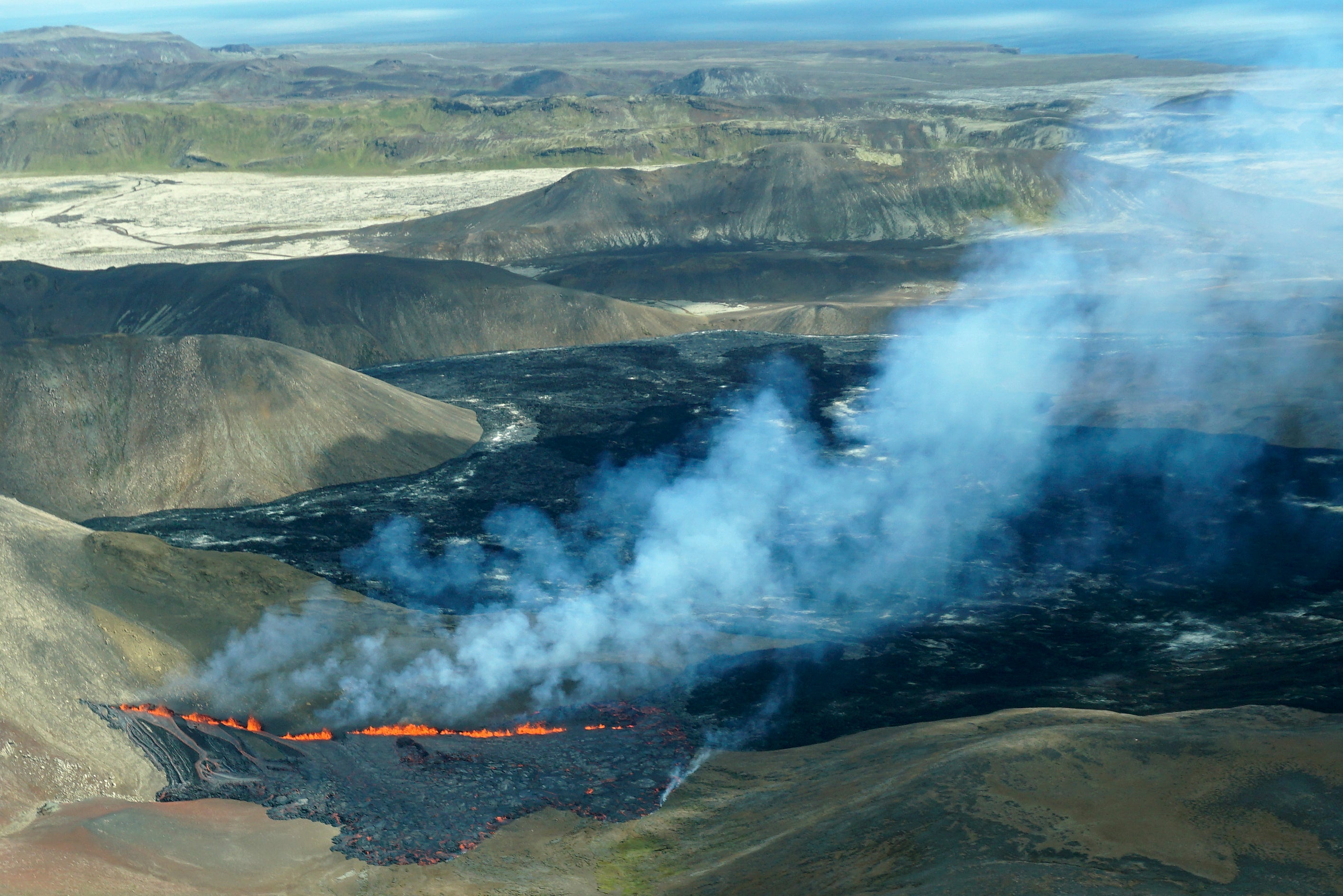Volcano near Iceland's main airport erupts again after pause
Authorities in Iceland say a volcano in the southwest of the country is erupting just eight months after its last eruption officially ended

Your support helps us to tell the story
From reproductive rights to climate change to Big Tech, The Independent is on the ground when the story is developing. Whether it's investigating the financials of Elon Musk's pro-Trump PAC or producing our latest documentary, 'The A Word', which shines a light on the American women fighting for reproductive rights, we know how important it is to parse out the facts from the messaging.
At such a critical moment in US history, we need reporters on the ground. Your donation allows us to keep sending journalists to speak to both sides of the story.
The Independent is trusted by Americans across the entire political spectrum. And unlike many other quality news outlets, we choose not to lock Americans out of our reporting and analysis with paywalls. We believe quality journalism should be available to everyone, paid for by those who can afford it.
Your support makes all the difference.A volcano in southwest Iceland began erupting Wednesday, the country’s meteorological authorities said — just eight months after its last eruption officially ended.
The Icelandic Meteorological Office urged people not to go near the Fagradalsfjall volcano, which is located some 32 kilometers (20 miles) southwest of the capital, Reykjavik.
The eruption in an uninhabited valley is not far from Keflavik Airport, Iceland’s international air traffic hub. The airport remained open and no flights were disrupted.
A live video feed from the site showed magma spewing from a narrow fissure about 100 to 200 meters (109 to 218 yards) long over a field of lava from last year’s eruption, the first on the Reykjanes Peninsula in almost 800 years.
Scientists had anticipated an eruption somewhere on the peninsula after a series of earthquakes over the past week indicated volcanic activity close to the crust.
Volcanologist Magnus Tumi Gudmundsson told The Associated Press that the eruption appeared to be small.
“But we don’t know where in the process things are at,” he said as he boarded a helicopter for a first look.
The 2021 eruption in the same area produced spectacular lava flows for several months. Hundreds of thousands people flocked to see the spectacular sight.
Iceland, located above a volcanic hotspot in the North Atlantic, averages an eruption every four to five years.
The most disruptive in recent times was the 2010 eruption of the Eyjafjallajokull volcano, which sent clouds of ash and dust into the atmosphere, interrupting air travel for days between Europe and North America because of concerns the ash could damage jet engines. More than 100,000 flights were grounded, stranding millions of passengers.
Shares in Iceland's flagship airline, Icelandair, rose 6% when news of the eruption broke Wednesday. Investors and residents alike had been spooked by the possibility of a much more disruptive eruption in a populated area of the peninsula.